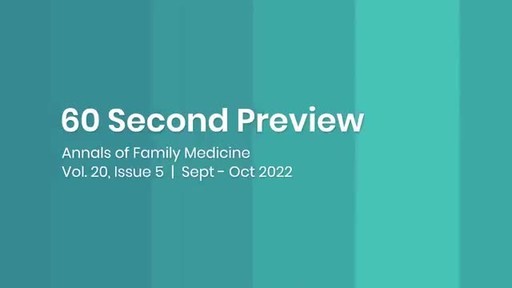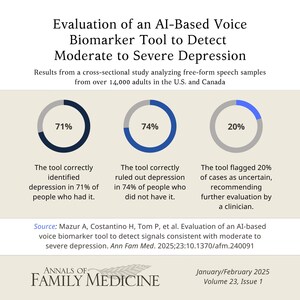Annals of Family Medicine: Family Medicine doctor offers solutions to challenges facing primary care in special report
ANN ARBOR, Mich., Sept. 28, 2022 /PRNewswire/ -- In a new special report, a family doctor and policy advocate with over 50 years of experience highlights current challenges for primary care and proposes increased spending within the profession. The report is published in the current issue of Annals of Family Medicine and is authored by Thomas Bodenheimer, MD, MPH, professor emeritus of the Department of Family and Community Medicine at the University of California San Francisco.
Bodenheimer argues that low rates of national health expenditures dedicated to primary care, coupled with an ever increasing patient to clinician ratio – estimated at around 2,100 per clinician – has led to an increase in physician burnout and decreased patient access to care.
The United States has spent significantly less on primary care than other industrialized, Organisation for Economic Co-operation and Development (OECD) countries. In 2016, 5.4% of total health expenditures in the U.S. were directed towards primary care, compared to 7.8% in 22 other OECD countries. Additionally, increasingly complex and numerous electronic health record documentation requirements and declining numbers of new primary care doctors are widely cited as significant challenges for the field.
Bodenheimer proposes various solutions:
- Increasing primary care spending through state level legislation.
- Eliminating the pay gap between primary care physicians and specialists.
- Developing multidisciplinary teams to care for large patient panels.
"With adequate primary care spending and powerful teams, primary care can become accessible to patients and joyful to all," Bodenheimer concludes.
In an accompanying editorial, by John M. Westfall, University of Colorado School of Medicine and Alison Huffstetler, Department of Family Medicine and Population Health at Virginia Commonwealth University, the authors find Bodenheimer's arguments compelling, writing, "The U.S. does not spend enough money to support primary care settings, train the primary care workforce, and this leads to lack of time to spend with patients on the care that really matters," adding that increased spending should be focused on team support, resources, technology and income equity for primary care clinicians.
Revitalizing Primary Care, Part 1: Root Causes of Primary Care's Problems and Revitalizing Primary Care, Part 2: Hopes for the Future
Thomas Bodenheimer
It Will Take a Million Primary Care Team Members
John M. Westfall, Alison N. Huffstetler
SOURCE Annals of Family Medicine

WANT YOUR COMPANY'S NEWS FEATURED ON PRNEWSWIRE.COM?
Newsrooms &
Influencers
Digital Media
Outlets
Journalists
Opted In







Share this article